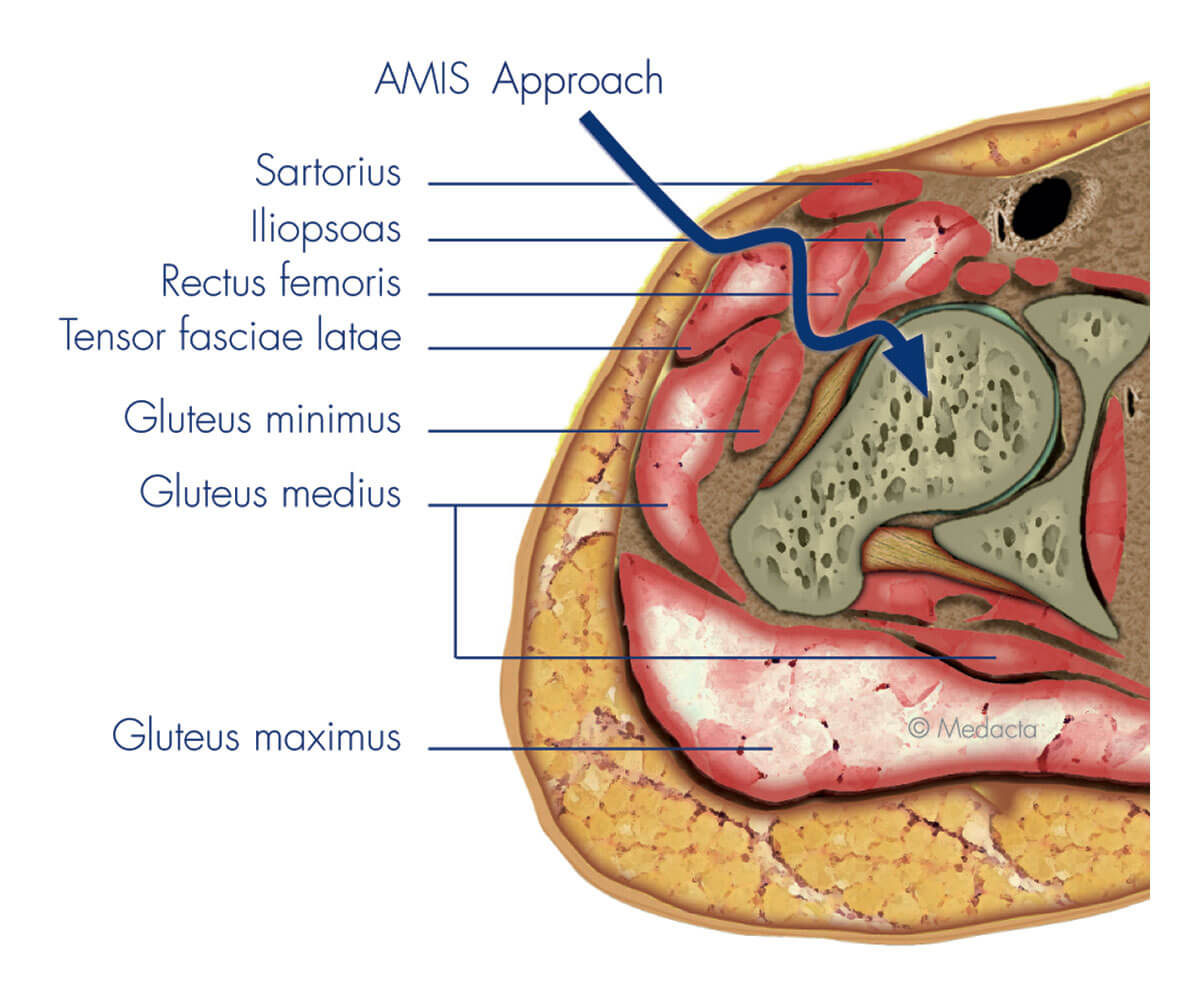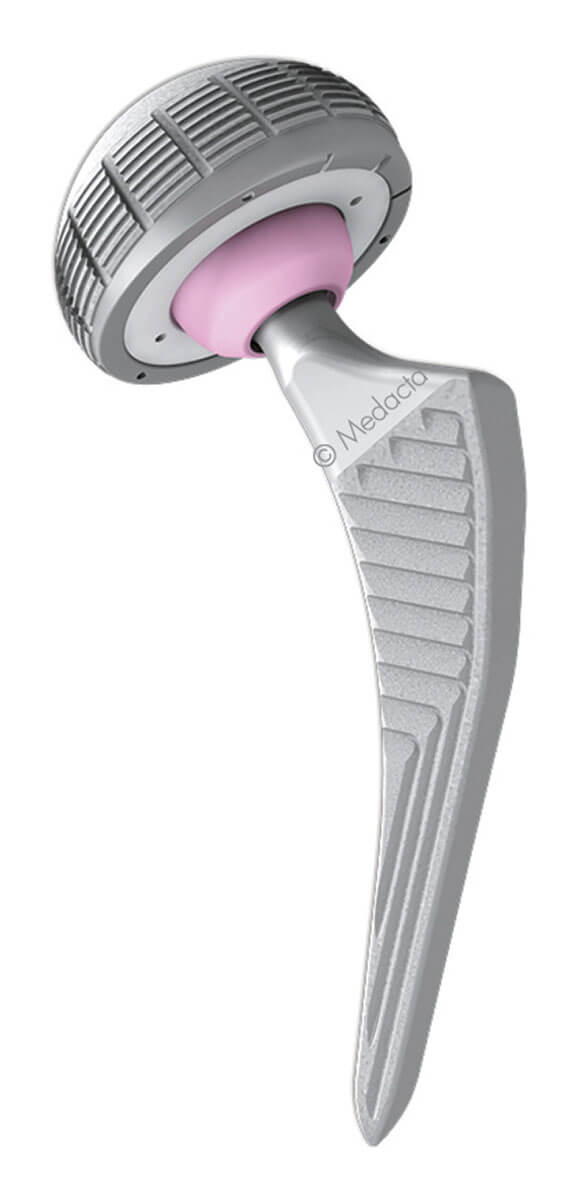
Minimally Invasive Direct Anterior Hip Replacement Surgery
Hip replacement surgery using smaller incisions and utilising the direct anterior approach has been performed in Europe for over fifty years. However, this approach to performing hip replacement surgery has only developed in recent years in English speaking countries. This approach is now being performed more frequently in Australia but is still only used in less than fifteen percent of hip replacement operations. There has been increased publicity about this procedure in Australia in the media and some patients are now requesting this approach to hip replacement surgery due to the many advantages it provides over the traditional approach.

An explanation of terminology
The Anterior Minimally Invasive Surgery for hip replacement is referred to as AMIS. The approach is also called ‘direct anterior hip replacement’.
History of AMIS
Tony Dunin first developed experience with the anterior minimally invasive approach (AMIS) when he worked with Professor Emile Letournel in Paris in 1986. He was impressed with the results of hip replacements done using this method but it did require the use of a special operating table that was not available in Australia until 2007.
Medacta, a European orthopaedic company, has been working with surgeons in Europe to develop a special operating table and special instrumentation to facilitate the use of the anterior minimal incision. Although there are several other so-called minimal approaches, the anterior approach is the only one that does not involve cutting any tendons or muscles. The technique does involve a different approach from that performed by most surgeons.
In 2008 Tony Dunin first attended a learning centre in France to familiarize himself with the technique using the special operating table and instrumentation. He has now performed approximately one thousand operations using the AMIS THR. He has been teaching this approach to surgeons in Europe, Japan and Australia. Although there are only a small number of orthopaedic surgeons performing this procedure in Australia, it has gained wide popularity in France, Germany Switzerland and more recently in the USA.
Francis Ma has had extensive experience with this technique. He has attended multiple workshops in the direct anterior approach both in Australia and Europe. He has received mentorship from Tony Dunin while developing expertise in this procedure. Francis routinely uses the anterior approach for total hip replacement for arthritis as well as for neck of femur fractures. He actively involved in the training of registrars and fellows to use this approach.
Advantages of the Direct Approach to Hip Replacement
- No muscle or tendons are cut
- The scar is very small
- Potential shortened length of stay in hospital
- No need for special precautions postoperatively
- Very low dislocation rate
- Less pain post operatively
- Earlier return to work and leisure pursuits
There have been several published articles demonstrating an earlier return to independence using AMIS compared with traditional approaches. At this stage there is no study demonstrating a long-term advantage with AMIS. How long AMIS continues to have the better functional outcomes remains debatable. While several published reports suggest the outcomes are equal at three months there have been several reports including two from Australia showing improved outcomes with the direct anterior approach at one to two years after surgery.
Type of Prosthesis for AMIS
The acetabular and femoral components inserted in this operation are very similar to those used for total hip replacements performed through traditional approaches. The Australian Joint Replacement Registry has shown that these components have low revision rates.
There is a choice of moving bearing surfaces for the direct anterior hip replacement. The options are either cobalt chrome on high cross-linked polyethylene or ceramic on ceramic. Both have their advantages and disadvantages and the choice of bearing surfaces can be discussed at the time of the consultation. Generally ceramic on ceramic is used for younger more active patients.
Indications for AMIS
The vast majority of patients with osteoarthritis of the hip are suitable candidates for the direct anterior approach. However, it is not indicated in patients:
- who are markedly obese
- have had previous hip surgery
- who have complex anatomical problems, such as congenital dislocation of the hip.
- who have severe protrusion
For detailed information visit our hip replacement surgery page.
Post-Operative Recovery for Direct Anterior Hip Replacement
It should be noted that the care of patients undergoing the direct anterior approach varies in the following ways.
- As patients generally experience less post-operative pain with this approach, they are able to commence walking earlier.
- As the hip is more stable with this approach the usual post-operative precautions are not necessary.
- Patients are allowed to flex the hip as far as is comfortable.
- Patients can lie on their side. With the standard approach it is usual for patients to be restricted to lying on their back while in bed for six weeks after surgery. Many patients find this very difficult.
- Patients do not require modifications in the home such as railings in the shower or raised toilet seats.
- Patients can sit in chairs of their choice. There is no need for chairs with raised seats. However, it is best to avoid low soft lounge chairs.
- Many patients are able to discard crutches after two to three weeks.
- Most patients can drive between three to four weeks post operatively.

